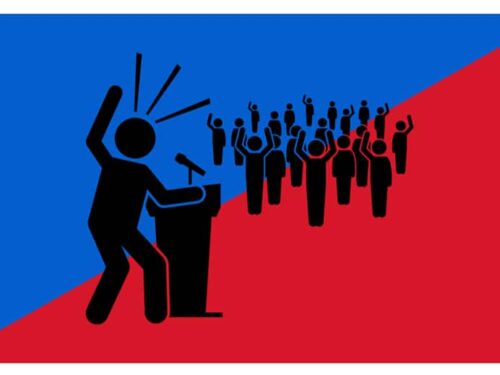
My first real training development and delivery job was for the New York City Police Department in the 1980’s and it was a doozy: use professional actors to help train police officers learn how to manage what they called “EDP”s – Emotionally Disturbed Persons. My responsibility was to cast and direct the actors and help them create realistic characters – like drug addicts going through withdrawal, schizophrenics who’d gone off their medication, and teenage runaways with suicidal tendencies – and stage believable situations in a secure training room where officers tried out their newly learned techniques.
It was painstaking, exhausting and intense work. And I loved it. Because for the first time outside of an actual theater, I saw how live, professional actors performing and improvising could transform peoples’ lives. Basically, we were able to transform what could have been a boring, intellectual, lecture driven training program into a learning experience that was incredibly memorable, practical, realistic and valuable for the participants. Any trainer who knows their business will tell you that results like that are the holy grail of training.
Since then I’ve had the opportunity to develop and deliver over 2,500 individual training programs, workshops, and talks for scores of companies, government agencies and non-profits both in western Europe and North America. Some of them featured my signature techniques using live theater and what’s now called “experiential learning,” which is best described as role play on steroids. But most of the time, due to the cost and difficulty of using professional actors in a training program, it’s just me up there, doing my thing.
So, as I take a breath before I head into yet another training room, I wonder: has anything really changed in the past 30 years? Have we gotten any better at delivering what used to be called training and is now called “Learning and Development” programs? Or are we simply doing the same-old, same-old in some slightly different way using new technology?
On the one hand, the technology we use to deliver training – like slideshows, videos, and clip-on lavalier mics hasn’t changed all that much. Sure, the best trainers have learned to use more and more images and less text up on the screen and many training rooms sport giant flat screen TV’s with built-in surround sound through which we can deliver live video conference training with people halfway around the world while simultaneously showing videos and conducting interactive polling in real time. All of those technological developments are definitely cool.
And if you’re doing technical training on software and simulations around project management or other complex code-writing, engineering and/or computer-related topics, then having access to the latest devices, individual wide-screen monitors at every desk, and the ability to take over anyone’s screen in a nano-second is almost mandatory in an age where the average millennial learner has played hundreds of hours of sophisticated online games and instinctively and unconsciously checks their smart phone an average of 30-50 times a day.
But, on the other hand, if the focus is not on developing technological skills, but rather on so-called “soft skills,” like leadership, management, interpersonal communication, emotional intelligence, delivering feedback, etc. then the best trainers can still do a great job without much technological support. And, if you’ve been around long enough, you know the best technology can still fail. So, you always have a backup plan, and if worse comes to worst, you deliver the training without any technology at all.
Great trainers are great storytellers, entertainers if you will, who can truly engage an audience doing nothing more than standing up front and talking, make them laugh or grow a lump in their throat, make them want to learn and help them to have insights and generate new ways of seeing and doing things that they never would have if they hadn’t walked into that classroom.
So, the answer is no, not much has really changed, except perhaps…the audience. There’s no question that the pace of work and productivity has increased significantly in the last 30 years. As a result, training audiences’ attention spans have contracted and their demands have expanded – exponentially.
I don’t consider myself an old guy, but when I started doing this work, there was no such thing as a smart phone to distract trainees in my classroom. There was no demand by senior management to do online or virtual training because it was cheaper. There was no requirement to “teach them everything they need to know about your complex, loaded topic in 45 minutes or less.”
Believe it or not, that police department training program I led in the 80’s was a week long. I’ll say it again: “a week long.” These days, my colleagues and I consider it an extraordinary luxury if a client will allow us to develop and deliver a training program that lasts more than one day! These days it’s get in, teach them a concept and a skill or two, and get out. There is little time to dive deep into a burning topic, to have facilitated discussions about difficult subjects, to engage in hours-long learning exercises. And yet the need for those training experiences haven’t gone away. In fact, I would argue that they are needed more than ever. There just doesn’t seem to be the time.
OK, I take it back – a lot has changed in the past 30, from the audiences’ side of the equation. Still, we’re fortunate that many directors of training get it about this change, and recognize that good training takes time, that not everyone has the attention span of a housefly, that there are still some topics that require in-depth and thoughtful discussion and consideration.
So, if I had to do all over again, would I change anything about how I deliver training? Not really. I think that if I’d been permitted and my clients could have afforded it, I would have used professional actors in almost every training session, talk or keynote I’ve ever delivered. These past three decades have taught me that nothing moves an audience more quickly, more profoundly, more effectively than live, professional theater, interactive facilitation and experiential learning (yeah, I know, “role play,” but with real actors.)
As for the next 30 years, well…I’m pretty sure I won’t be able to keep doing this work at the pace I’m doing it now, for that long. I’ll start dialing it down in the next 15-20 years. But to anyone who intends to pick up the training baton and run with it, I’d say, don’t worry about the technology; say “yes,” when they demand you shorten your program or run it online or over video conference; and do whatever you can to sharpen your fundamental skills: standing up in front of a room calmly, being a great storyteller, and inspiring people to learn through your passion, energy and patience.
Not much has really changed in training over the past 30 years, and that’s fine with me.




